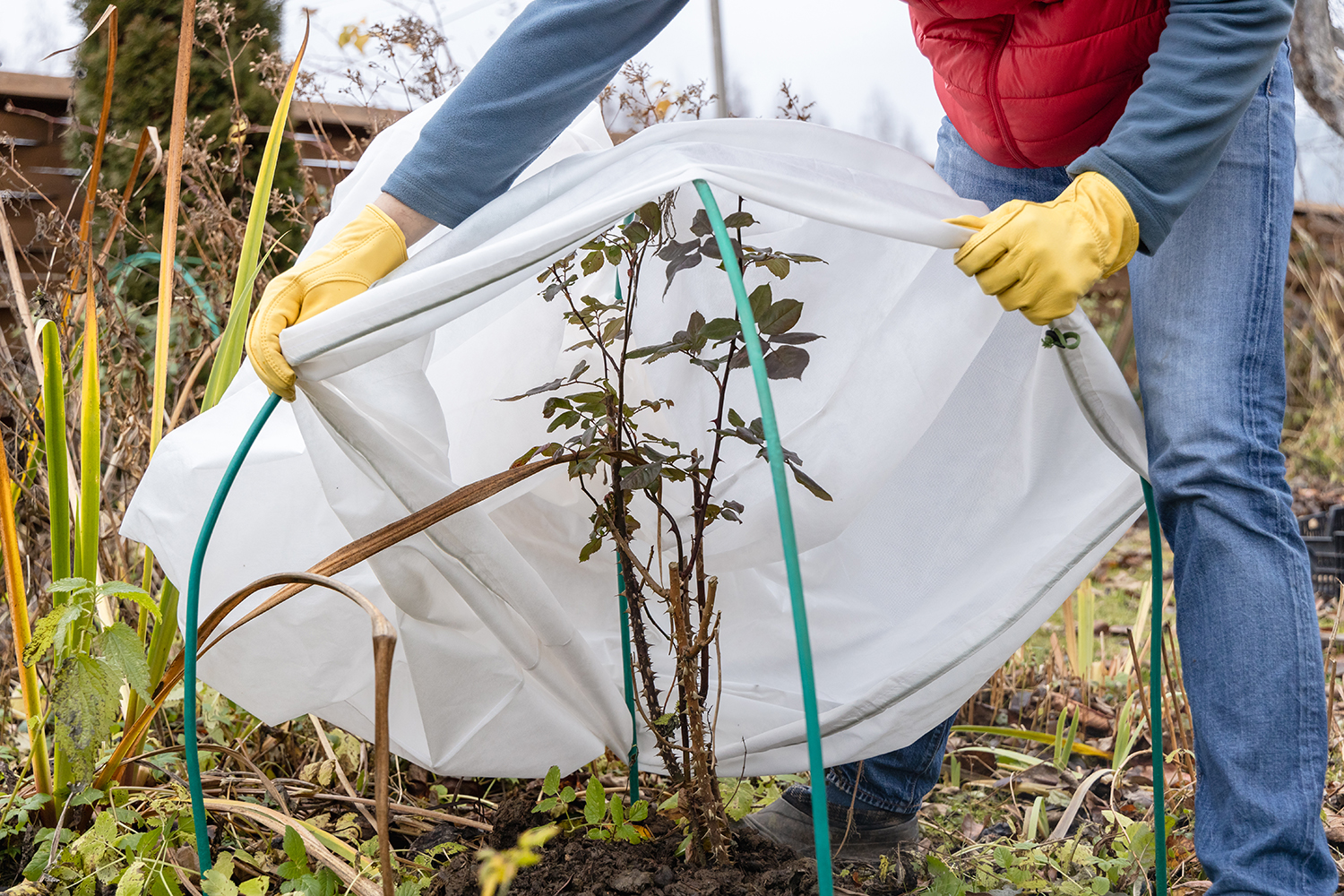
Preparing your garden for the winter
Preparing your garden for winter is essential for protecting plants, maintaining space, and ensuring it is ready for spring.
1. Protect Plants from Frost
Frost can harm delicate plants, so it is critical to provide protection. Move potted plants indoors or into a greenhouse. To protect plants that cannot be moved from the cold, use fleece, cloches, or mulch. Mulching around the base of shrubs and perennials helps to insulate roots and retain moisture.
2. Prune Trees and Shrubs
Late autumn and early winter are ideal times to prune deciduous trees and shrubs. This promotes healthy growth in the spring while lowering the risk of damage from heavy snow or strong winds. Remove any dead, diseased, or damaged branches to improve airflow and shape.
3. Tidy Up Garden Beds
Remove fallen leaves, dead plants, and debris from garden beds to prevent diseases and pests from overwintering. Incorporate any organic matter into your compost pile. Cut back perennials after they have finished flowering, but leave some seed heads for wildlife to feed birds.
4. Prepare Your Lawn
Rake fallen leaves from your lawn to keep it from becoming waterlogged. Apply an autumn lawn feed to strengthen the grass roots before winter arrives. You should also mow the lawn one last time before winter, with the blades set higher to prevent scalping.
5. Clean and Store Tools
Clean and sharpen gardening tools to prevent rust and prepare them for the following year. Keep them in a dry, sheltered area. Disconnect and drain hoses to keep them from freezing and cracking.
6. Protect Outdoor Furniture and Features
Protect your garden furniture from frost and rain by storing it or covering it with weatherproof material. Empty and clean the water features, and insulate outdoor taps and pipes to prevent freezing.
Preparing your garden for winter is essential for protecting plants, maintaining space, and ensuring it is ready for spring.
1. Protect Plants from Frost
Frost can harm delicate plants, so it is critical to provide protection. Move potted plants indoors or into a greenhouse. To protect plants that cannot be moved from the cold, use fleece, cloches, or mulch. Mulching around the base of shrubs and perennials helps to insulate roots and retain moisture.
2. Prune Trees and Shrubs
Late autumn and early winter are ideal times to prune deciduous trees and shrubs. This promotes healthy growth in the spring while lowering the risk of damage from heavy snow or strong winds. Remove any dead, diseased, or damaged branches to improve airflow and shape.
3. Tidy Up Garden Beds
Remove fallen leaves, dead plants, and debris from garden beds to prevent diseases and pests from overwintering. Incorporate any organic matter into your compost pile. Cut back perennials after they have finished flowering, but leave some seed heads for wildlife to feed birds.
4. Prepare Your Lawn
Rake fallen leaves from your lawn to keep it from becoming waterlogged. Apply an autumn lawn feed to strengthen the grass roots before winter arrives. You should also mow the lawn one last time before winter, with the blades set higher to prevent scalping.
5. Clean and Store Tools
Clean and sharpen gardening tools to prevent rust and prepare them for the following year. Keep them in a dry, sheltered area. Disconnect and drain hoses to keep them from freezing and cracking.
6. Protect Outdoor Furniture and Features
Protect your garden furniture from frost and rain by storing it or covering it with weatherproof material. Empty and clean the water features, and insulate outdoor taps and pipes to prevent freezing.
Comment
Comments
Log in or sign up for Facebook to connect with friends, family and people you know.



